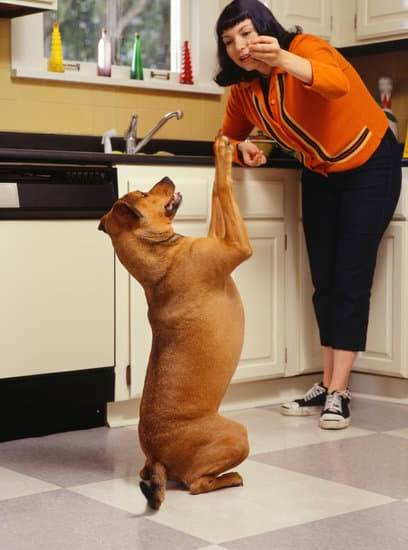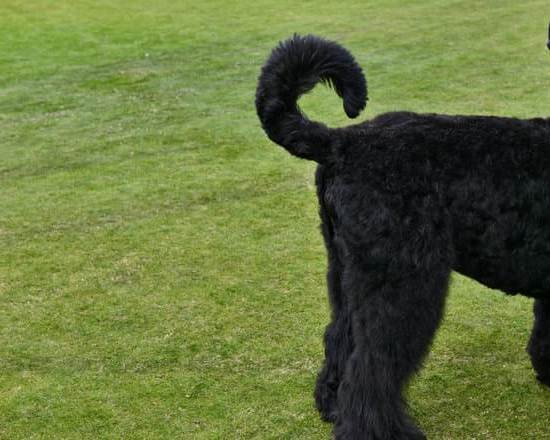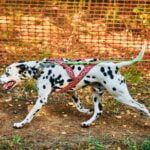What is the easiest large dog to train? Training a large dog can be a daunting task, but it is essential for their safety and the harmony of your household.
Large dogs are strong, powerful, and often have strong personalities, making training crucial for their well-being and the peace of your home. In this article, we will explore the characteristics of easy-to-train large dog breeds, provide tips and techniques for training, discuss the role of positive reinforcement, common challenges in training large dogs and how to overcome them, and share real-life success stories of owners training their large dogs.
Large dogs have unique needs when it comes to training due to their size and strength. It is important to understand which breeds are easier to train and what specific characteristics make them more receptive to training. By identifying these traits, prospective owners can make an informed decision about which breed will best suit their lifestyle and abilities as a trainer.
In the following sections, we will delve into the top 5 easiest large dog breeds to train, providing insights into their temperaments and abilities. Additionally, we will share valuable training tips and techniques that are specifically tailored for larger breeds. The key to successful training lies in understanding the unique needs of these breeds and applying effective methods that cater to their individual strengths and challenges.
Characteristics of Easy-to-Train Large Dog Breeds
Large dog breeds are often known for their strength, protective nature, and loyalty to their owners. When it comes to finding the easiest large dog to train, it’s important to consider the characteristics of the breed. Some of the key traits that make certain large dog breeds easier to train include intelligence, eagerness to please, and a calm disposition.
Intelligence
One of the most important characteristics of easy-to-train large dog breeds is their intelligence. Breeds such as the German Shepherd, Labrador Retriever, and Golden Retriever are known for their high levels of intelligence, making them quick learners when it comes to obedience training and commands.
Eagerness to Please
Another characteristic that sets easy-to-train large dog breeds apart is their eagerness to please their owners. Breeds like the Border Collie and the Standard Poodle thrive on positive reinforcement and will go above and beyond to make their owners happy, making them highly trainable in various tasks and activities.
Calm Disposition
Large dogs with a calm disposition are often easier to train compared to those with more excitable or anxious personalities. Breeds such as the Bernese Mountain Dog and the Basset Hound are known for their gentle and laid-back demeanor, making them more receptive to training methods and less likely to exhibit stubborn behavior.
Understanding these key characteristics can help potential large dog owners choose a breed that best suits their lifestyle and training preferences. By selecting a breed with these traits in mind, owners may find that training a large dog can be an enjoyable and rewarding experience for both themselves and their canine companions.
Top 5 Easiest Large Dog Breeds to Train
When it comes to training large dogs, certain breeds are more predisposed to learning and following commands. These breeds possess characteristics that make them easier to train, making the task less daunting for owners. Here are the top 5 easiest large dog breeds to train:
Labrador Retriever
Labrador Retrievers are known for their friendly and outgoing nature, which makes them eager to please their owners. They are highly intelligent and respond well to positive reinforcement training methods. Their willingness to learn and their gentle temperament make them one of the easiest large dog breeds to train.
Golden Retriever
Golden Retrievers are not only beautiful but also incredibly intelligent and obedient. They thrive on human interaction and have a strong desire to please their owners, making training a relatively seamless process. Their patience and eagerness to learn make them a popular choice for families as well as service and therapy work.
German Shepherd
German Shepherds are highly trainable due to their intelligence and strong work ethic. They excel in various canine activities such as obedience, agility, and protection work. With the right training approach, they can be obedient, loyal, and devoted companions.
Border Collie
Border Collies are known for their exceptional intelligence and incredible focus, which makes them easily trainable for a variety of tasks. Their high energy levels require mental stimulation through training and activities such as agility or flyball.
Standard Poodle
Standard Poodles are not only elegant in appearance but also highly intelligent dogs that excel in obedience training. They respond well to positive reinforcement methods and enjoy using their brains through learning new commands or tricks.
These top 5 easiest large dog breeds stand out because of their intelligence, eagerness to please their owners, and adaptability to various training techniques.
Training Tips and Techniques for Large Dogs
Training large dogs can be a rewarding experience, but it also comes with its own set of challenges. However, with the right tips and techniques, it is possible to effectively train your large dog. One important tip is to start training your large dog as early as possible.
Puppies are like sponges when it comes to learning, so beginning their training at a young age will set them up for success in the future. Consistency is also key when training large dogs. Establishing a consistent routine and using the same commands will help your dog understand what is expected of them.
When it comes to techniques, positive reinforcement has been found to be especially effective in training large dogs. This involves rewarding your dog for good behavior with treats, praise, or playtime. Positive reinforcement not only motivates your dog to behave well but also strengthens the bond between you and your pet.
Another effective technique for training large dogs is using clicker training. The sound of the clicker serves as a marker for desired behavior and can help reinforce commands more effectively.
It’s important to keep training sessions short and fun for your large dog. Large breeds can easily become bored or distracted during long training sessions, so keeping it engaging will yield better results. Additionally, patience is crucial when training large dogs as they may take longer to grasp certain commands compared to smaller breeds. By using these tips and techniques, you can make the training process a positive experience for both you and your large dog.
The Role of Positive Reinforcement in Training Large Dogs
Training large dogs can be a challenging task, but using positive reinforcement techniques can make the process much smoother. Positive reinforcement involves rewarding your dog for displaying the desired behavior, which helps to strengthen that behavior over time. When it comes to large dogs, positive reinforcement is especially important as it can help build trust and respect between you and your pet. Here are some key strategies for using positive reinforcement in training large dogs:
- Use treats and praise: When your large dog follows a command or exhibits good behavior, reward them with their favorite treats and plenty of praise. This will encourage them to continue performing the desired actions.
- Consistency is key: Be consistent with your rewards so that your dog understands which behaviors are being reinforced. If they receive a treat for sitting on one occasion but not the next, it can lead to confusion.
- Timing is crucial: It’s important to deliver the reward immediately after your dog exhibits the desired behavior. This will help them make the connection between their action and the positive outcome.
Large dogs respond well to positive reinforcement because it creates a positive association with training sessions and helps to strengthen the bond between you and your pet. By using treats, praise, and other rewards effectively, you can motivate your large dog to learn new commands and behaviors while fostering a trusting relationship.
Using positive reinforcement in training also sets a foundation for continued obedience and good behavior throughout your dog’s life. This approach creates a harmonious and enjoyable environment for both you and your large dog, leading to a strong and fulfilling companionship.
Common Challenges in Training Large Dogs and How to Overcome Them
Large dogs, while often known for their loyalty and protective nature, can also present some challenges when it comes to training. One common challenge is their physical size and strength, which can make it difficult to control them during training sessions.
Another challenge is their stubbornness, as some large breeds are known for being independent thinkers and may not always be motivated to follow commands. Additionally, socialization can be a challenge with large dogs, as they can sometimes be intimidating to other animals and people due to their size.
To overcome the challenges of training large dogs, it’s important to start early and be consistent. Begin training your large dog as soon as you bring them home, using positive reinforcement techniques to encourage good behavior.
In terms of physical strength, utilizing proper training equipment such as a sturdy leash and harness can help you maintain control during walks and obedience training. It’s also essential to provide mental stimulation for your large dog through interactive toys and games to keep them engaged in the training process.
Socialization is another crucial aspect of training large dogs. Gradually expose your dog to different environments, people, and other animals in a controlled manner. This will help them become more comfortable and well-behaved in various situations. Seeking professional help from a certified dog trainer or behaviorist can also be beneficial in addressing specific challenges with training your large dog.
The effort put into overcoming these challenges in training large dogs is well worth it in the end. By properly addressing these obstacles, you will establish a strong bond with your canine companion and ensure that they are well-behaved members of your family and community.
| Challenges | Overcoming Strategies |
|---|---|
| Size & strength | Use proper training equipment; start early; stay consistent |
| Independence & stubbornness | Utilize positive reinforcement techniques; seek professional help if needed |
| Socialization |
The Benefits of Training an Easy-to-Train Large Dog
Training a large dog can be quite a challenge, especially if they are not easily trainable. However, the benefits of training an easy-to-train large dog are numerous and can greatly impact the relationship between you and your furry friend.
Here are some key benefits of training an easy-to-train large dog:
- Enhanced safety: Well-trained large dogs are less likely to exhibit aggressive behavior towards humans and other animals, reducing the risk of accidents or confrontations.
- Improved socialization: Easy-to-train large dogs tend to be more obedient and well-behaved in social situations, making it easier to take them out in public or introduce them to new people and pets.
- Stronger bond: Training sessions provide an opportunity for bonding and communication between you and your dog. This can lead to a stronger, more trusting relationship built on mutual respect.
- Greater freedom: With proper training, easy-to-train large dogs can be given more freedom to roam off-leash in safe environments, knowing that they will obey commands and stay close by.
- Mental stimulation: Training activities provide mental stimulation for your large dog, keeping their mind engaged and reducing boredom or destructive behavior.
Real-Life Success Stories of Owners Training Their Large Dogs
Training a large dog can be a challenging but ultimately rewarding experience. Many owners have successfully trained their large dogs to be well-behaved, obedient, and loving companions. One such success story is that of Max, a German Shepherd who was trained by his owner, Sarah, to be a therapy dog. Max now brings joy and comfort to hospital patients and nursing home residents, thanks to his extensive training and gentle disposition.
Another inspiring success story is that of Duke, a Labrador Retriever who was trained by his owner, Tom, to be a search and rescue dog. Duke underwent rigorous training to learn how to track scents and find missing persons. Thanks to his dedication and Tom’s patient guidance, Duke has successfully located several lost hikers in wilderness areas, earning him national recognition for his invaluable service.
In addition to these heartwarming stories, there are countless other examples of owners who have successfully trained their large dogs for various tasks and roles. Whether it’s serving as a well-mannered family pet or excelling in specialized fields such as obedience trials or working with law enforcement agencies, the potential for success in training large dogs is truly limitless.
With the right approach, patience, and commitment, owners can build a strong bond with their large dogs through training while also helping them reach their full potential.
| Success Story | Dog Breed |
|---|---|
| Max the Therapy Dog | German Shepherd |
| Duke the Search and Rescue Dog | Labrador Retriever |
Conclusion
In conclusion, the impact of proper training on the relationship with your large dog cannot be underestimated. Training not only ensures the safety and well-being of your pet but also strengthens the bond between you and your furry companion. By taking the time to train your large dog, you are investing in a harmonious and enjoyable relationship that will last for years to come.
Choosing an easy-to-train large dog breed can make the training process more manageable and enjoyable for both you and your canine companion. With the right techniques and consistency, breeds such as Golden Retrievers, Labrador Retrievers, and German Shepherds can quickly learn commands and behaviors, making them a joy to train.
Ultimately, training a large dog is about building trust, establishing boundaries, and fostering clear communication. Through positive reinforcement, patience, and a deep understanding of your dog’s specific needs, you can create a strong foundation for a fulfilling partnership with your large breed pet. The effort you put into training will undoubtedly pay off in the form of an obedient, well-adjusted, and loving pet that brings immeasurable joy to your life.
Frequently Asked Questions
What Big Dog Is the Easiest to Train?
The Golden Retriever is widely considered to be the easiest large dog breed to train. They are known for their intelligence, obedience, and eagerness to please, which makes them highly trainable. Their friendly and gentle nature also makes them great companions for families and individuals alike.
What Is the Most Trainable Large Dog?
The Labrador Retriever is often cited as the most trainable large dog breed. Their intelligence, willingness to learn, and social nature make them highly responsive to training. Labradors excel in various roles such as service dogs, therapy dogs, search and rescue dogs, and of course, beloved family pets.
What Is the Most Gentle Giant Dog?
The Great Dane is often referred to as the “gentle giant” of the dog world due to its calm and affectionate demeanor. Despite their large size, they are typically very gentle and sweet-natured with their families. Proper training and socialization are crucial for these massive yet lovable dogs to ensure they develop into well-behaved companions.

Welcome to the blog! I am a professional dog trainer and have been working with dogs for many years. In this blog, I will be discussing various topics related to dog training, including tips, tricks, and advice. I hope you find this information helpful and informative. Thanks for reading!





